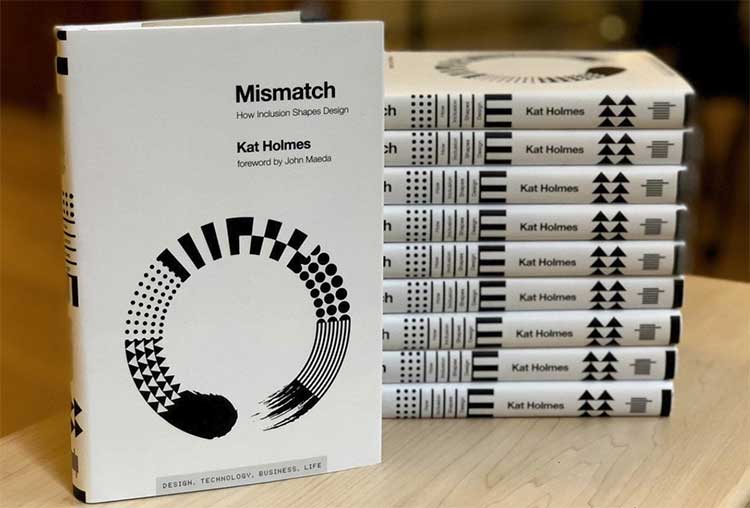How Inclusion Fuels Business

It may not be immediately obvious what the business case is for shifting toward inclusion, but the market opportunity is exponential. Consider the objects and tools around you: the adjustable chair at your desk, reading glasses, the touchscreen on your mobile device, your computer keyboard, email, flexible straws. All of these are ubiquitous and deeply integrated into our daily lives. But did you know that these tools are descendants of innovations that were created to remedy exclusion?
Perhaps your company is still grappling with what inclusion means in the context of your industry. Three of the most common streams of discussions center on inclusion in the workforce, workplace, and the marketplace. The first two are more familiar. Changing hiring practices improves diversity in the workforce and attention to culture improves inclusion the workplace. How to deliver more inclusive products and services to market, however, remains a mystery for many teams. And yet, starting with inclusive product opportunities could actually be a more effective way to also lead toward workplace and workforce inclusion.
It might be helpful to start with the classic creative thinking exercise where one is asked to imagine all the different ways of using a typical brick. An expected application is to layer bricks to build the walls of a structure. But what else? Perhaps the brick is a doorstop. Maybe it’s heated and used to cook a chicken, or ground into dust and used as sand.
It’s easy to assign fixed meanings to objects. But doing so can lead to exclusionary ways of working. If we change the shape, context, or purpose of an object, it can take on a new meaning: A brick can be more than a brick. Stretching our assumptions about the purpose of an object or environment opens us up to exploring how a solution can adapt to a specific set of circumstances. Adaptability to the needs of a unique person is a signature trait of an inclusive solution.
Inclusive ingenuity
So how do you make a business case for inclusion? What is the return on investment? How do you prove that inclusion works? These are the most common questions that arise when teams are discussing whether to invest in the inclusive design process.
First, let’s consider some examples of inclusive design:
In the early 1800s, Italian inventor Pellegrino Turri partnered with Countess Carolina Fontoni da Fivizzano, his friend – and some say lover – who was losing her eyesight, on a better way to write letters without having to dictate her private thoughts to a scribe. The result was a typing machine that associated one letter with each key that could be tapped to imprint on carbon paper, making writing accessible to people who are blind. Centuries later, we have modern keyboards for computing and mobile devices.
The child-proof caps on pill bottles are hard for everyone, not just children, to open. PillPack worked closely with long-term cancer patients – some of whom took as many as sixteen different medications in one week – to understand the complexities and risks of managing multiple types, dosages, and schedules of medications. By doing so, PillPack was able to reimagine the entire delivery system for prescriptions and offer a pharmacy service that pre-sorts a customer’s medications in clearly labeled pouches.
Touchscreen smartphones evolved from the work of engineer Wayne Westerman, who had carpal tunnel injuries and wanted to create a way to interact with computers using touchpads instead of a keyboard. His company, FingerWorks, created a touchpad for each hand to replace the keyboard and gained a following among people with hand disabilities or repetitive-strain injuries. Eventually, the appeal of the touchpad extended to the masses, culminating in Apple buying the technology to use as the foundation for the first gesture-controlled multi-touch interface for the iPhone.
Fueling innovation
These stories begin to illustrate how solutions created by and with excluded groups can lead to solutions for a broad spectrum of people. We can draw from these examples a few key ways that inclusion can drive innovation:
- Interrupt habits: The inclusive design process interrupts the status quo. Even if just for a moment, recognizing the exclusion around us and learning from people who have expertise in exclusion could be the key to unlocking design challenges.
- Create constraints: It may seem counter-intuitive, but focusing on excluded communities outlines clear constraints, which helps teams build a more profound understanding of how to connect with a wider target audience. Stronger constraints push designers and engineers to innovate.
- Leverage existing resources: Often, applying a new lens to existing resources or forming new combinations of existing solutions is all that’s needed. Companies may have decades’ worth of ideas and prototypes that they’ve developed but never released into the world. The right ingredients may already be in the pantry, so to speak. Many inclusive innovations don’t require dramatic reinvention.
- Increase customer engagement: Products that are hard to use are obstacles to customer engagement. Inclusive design helps to remove obstacles, or mismatches, and reduces the friction in customer experience.
- Minimize risk: Retrofitting inclusion is expensive and time-consuming. If teams treat accessibility and inclusion as an afterthought, products may end up not meeting legal criteria for accessibility, or (inadvertently) discriminatory solutions may face public outcry, ultimately requiring significant investments to address.
In an ideal world, every product or solution would employ inclusive design from the start. But there is no one-size-fits-all approach to practicing inclusive design. Each company needs to incorporate inclusive design when and where it can in ways that complement its existing processes.
Ultimately, inclusive products and services create a diversity of ways for people to engage with your business, with a shared sense of belonging and being welcomed. Start with customers whose voices are currently missing from your feedback channels, or the communities that are at risk of losing the most when you introduce new solutions into the marketplace. With their insight and guidance, the growth will follow.
Have you read?
Best CEOs In The World 2018: Exceptional Chief Executives
Rich List Index: The World’s 1,200 Billionaires; Meet The Richest People On Earth
India Rich List For 2018: Richest Indian Billionaires.
Bring the best of the CEOWORLD magazine's global journalism to audiences in the United States and around the world. - Add CEOWORLD magazine to your Google News feed.
Follow CEOWORLD magazine headlines on: Google News, LinkedIn, Twitter, and Facebook.
Copyright 2025 The CEOWORLD magazine. All rights reserved. This material (and any extract from it) must not be copied, redistributed or placed on any website, without CEOWORLD magazine' prior written consent. For media queries, please contact: info@ceoworld.biz









